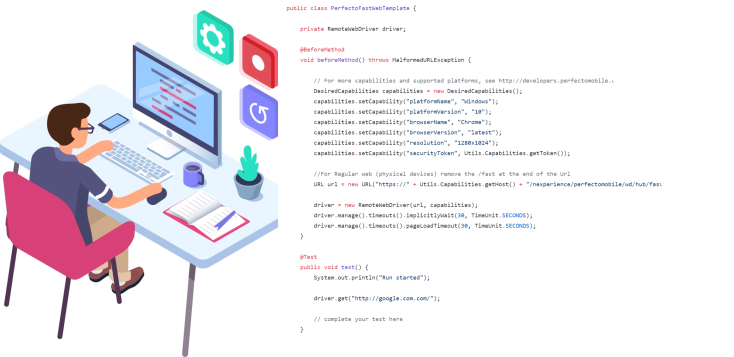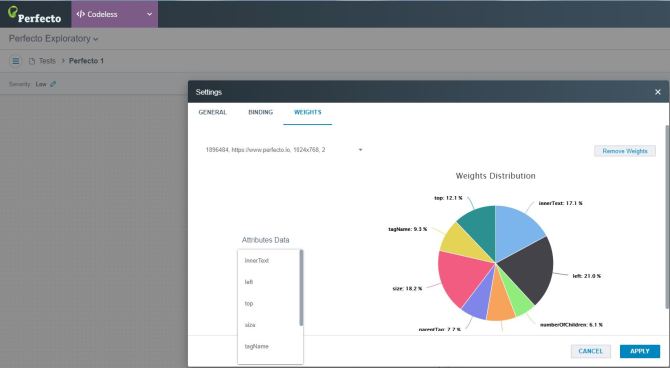Code-Based Test Automation vs. Codeless Automation
As more advanced technologies are entering the continuous testing landscape powered by AI/ML, organizations and especially, practitioners, are debating which is better, and why if any should they adopt codeless test authoring solutions?
In this blog, I will be providing the various considerations to switch, and/or combine between the 2 test automation methods.
TL,DR –> There isn’t a magic answer to this debate, and there isn’t a method that is good vs. bad.
Top Considerations
To better address the question on when and why to use either methods, here are the top items to consider, not listed by importance, since each team might relate to different objectives and priorities:
- What are the application use cases and flows to automate?
- Which persona is going to create and maintain these scenarios?
- What are the skill-set within the team/individuals for the job?
- Is the app under test Mobile/web/responsive/desktop?
- What are the time constrains for the project, and what are the release cadence going forward (weekly/monthly)?
- Is the test suite meant to be integrated to other tools (CI/CD/Frameworks)?
- Are there any advanced automation scenarios (chatbots, IOT, location, audio, etc.)?
- What are the cost boundaries (tools, project, lab, etc.)
- Is the test suite meant to be executed at large scale?
- Is the project a new one, or an additional layer of coverage on top of existing code-based suite? (Selenium/Appium, etc.)

Diving Deeper
Now that we’ve listed some important consideration, let’s explain them a bit deeper.
For teams that are already working on a project (web/Mobile), and have implemented a good working amount of code-based test scenario that are embedded into processes, CI/CD, and other triggers, such consideration should be heavily considered – what is the incentive to change? are there coverage gap in the code-based suite? is there too much noise and flakiness attached to the existing test code? etc. Only if there is a good incentive like the ones mentioned, teams should consider adding codeless test scenarios into their pipeline.
On the other hand, for teams that are just starting a new project, that’s a perfect timing to look into the entire team skills, and decide based on the technology the project is built on, what tools to use – if might make sense for example, for a newly created website to combine a Selenium framework that SDETs that are Java/JavaScript developers would lead together with business testers that can remove some of the load from them via ML-Driven codeless selenium tools.
After covering use cases, quality of existing test suite, new vs. existing projects, lets also consider the time-frames and budget allocated to the project. It is clear that recording codeless scripts takes on average 6-10 times faster than coding the same scenario in Java or other development language. It involves setting up the platform and test environment, coding, debugging, executing at scale, assertions, and more. This obviously also translate into $$ savings. On the other hand, not all test scenarios can be easily recorded, since, for some advanced flows, coding might be a better approach and an easier one to maintain over time. This is why, sometimes it is better to look at the job-to-be-done, prior to rushing into scripting.

Next in the overall debate is the Eco-system and tools landscape within the organization. Including a new technology is not easy, often not well-accepted, and also not always justified. In today’s reality when squad teams are working together and consists of a variety of resources with varying skills, objectives, and preferences, integrating a new technology should be done with proper consideration, and with proper validation that it “plays” nice within the other existing tools. Codeless tools in that context, should fill in an important gap within the team, integrate well into existing CI/CD and other processes, and not cause duplication of effort, or additional overhead.
Lastly for this blog (not for the entire debate), I would touch the cost of maintenance of test automation scripts. This is perhaps one of the problematic items for any test automation team. Writing a script once, making it run across platforms over time is an easier said than done task. Applications are constantly changing, and so does the platforms under test (mobile devices/OS versions, Browsers), therefore, scripts needs to be properly maintained to ensure clean and noise-free pipeline. Codeless in many ways addresses such challenge through self-healing of elements, test steps, and more. It can be also achieved within code-based projects through advanced reporting and analysis, with automated root-cause analysis and other methods, but codeless does shine the most in such cases.

Bottom Line
I tried to keep this blog short and to the point, and leave the practitioners the decision-making across the 2 methods. As written in this post, there are plenty of questions to address prior to adopting a codeless tool, and how to combine it within existing code-based suites. Combining both methods in my honest opinion is the way to go in the future, and the way to maximize the overall test automation coverage with greater efficiency across the teams. Make the right decision that fits the project now, and also in the long-run.

Published on Java Code Geeks with permission by Eran Kinsbruner, partner at our JCG program. See the original article here: Code-Based Test Automation vs. Codeless Automation Opinions expressed by Java Code Geeks contributors are their own. |





